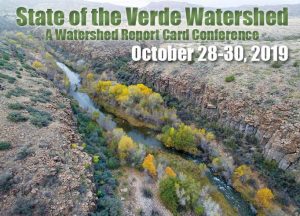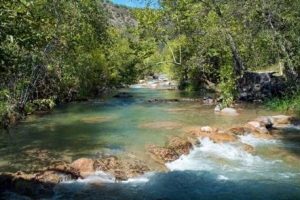 Sedona AZ – Rivers inspire us with their beauty and challenge us with their power. Rivers give us water, food, energy, and transportation. Rivers are places to recreate and experience nature. Throughout history, people have settled near rivers. Healthy riverbanks and streamside wetlands play an important role in providing clean water, mitigating floods, and supporting fish and wildlife habitat. Rivers are a key part of the global water cycle. Water is life!
Sedona AZ – Rivers inspire us with their beauty and challenge us with their power. Rivers give us water, food, energy, and transportation. Rivers are places to recreate and experience nature. Throughout history, people have settled near rivers. Healthy riverbanks and streamside wetlands play an important role in providing clean water, mitigating floods, and supporting fish and wildlife habitat. Rivers are a key part of the global water cycle. Water is life!
During the 1960s, countries began to recognize that we had taken rivers for granted, allowing them to become polluted and even run dry. The U.S. Congress took action to preserve some of our most precious waterways. In 1968, President Johnson signed the Wild and Scenic Rivers Act. Many rivers have been added to the National Wild and Scenic Rivers System since then. In Arizona, the only rivers designated wild and scenic are both in the Verde watershed: 40.5 miles of the lower Verde and 16.5 miles of Fossil Creek.

Fossil Creek – Recreation.gov
Our rivers face many threats. Only a fraction of one percent of America’s rivers flow freely and it’s no surprise that those are the ones people flock to for river recreation. The Act only protects 12,754 miles of rivers, which is less than one-quarter of one percent of the roughly 3.5 million miles of rivers in the US.
Wild rivers, designated or not, are home to the most vibrant wildlife populations. Special protections, such as Wild and Scenic designation, help make sure rivers and their ecosystems remain healthy for all of us. We who love the Verde River are fortunate indeed that so many river advocates work on its behalf.
Join us and other river advocates at the State of the Verde Watershed Conference. We can work together to protect our watershed.
CLICK HERE TO VIEW THE PROGRAM
Early Registration Ends September 22.
SIGN UP before September 22nd to get priority pricing.
We look forward to seeing you there.
Laura Jones, Community Engagement Coordinator
registrar@verderiver.org



Fake news…
There is no way to pollute a river , just like climate change isn’t occurring .
This whole ploy sounds like a “land grab”. We need less and less regulations until zero are in place .
Richard Timothy
(Deleted by Editor)
Ban Tourists !! Only Native American and local residents.
I’m tired of reading stupid comments by these two posters. My issue would be with this conference’s sponsors like SRP. Shows how superficial Sedona posters like those two are. Caring about the environment is not political, it’s commonsense to not foul your own nest. My guess they both drink for a living. My guess is they cater to tourists for livelihoods.
Your laughingly referred to indigenous peoples warred and enslaved and kidnapped and raped and murdered while pillaging other tribes and nations across the present day North and South America continents long before Europeans or Vikings and African and Middle Eastern and Islanders came fleeing the same warring tribes and nations on their continents. Long before Aztecs and Incas Eskimos Dine and Hopi and others took form. So which tribes and which family members of those tribes and the other tribes and nations are to be accepted as indigenous or cast out for warring and destroying peaceful people? Political correctness demands you choose.
Every continents self flagellation is tiring and based on archeological and anthropological ignorance. It’s a condition for people who cannot and will not live in the present and the future and who cannot believe they have free will and choice and who are educated by the same. The mantra of the deceived not the conceived.
Karen, History Teach says:Your laughingly referred to indigenous peoples warred and enslaved and kidnapped and raped and murdered really you believe this,
Did you even go to school ?
The local natives farmed, and in Phoenix there were over 200 miles of irrigation ditches for farming…. And then the whites came and took it all…. All in the name of Christianity and progress. The whites did the natives no favors just took their land. My on place in Indian Garden were farms and the Indians sold produce to the locals….. Until the late 1880ies The Thompson came along and just took the land…..
Please don’t pass off the that the white man civilized the savage. We raped and killed ,short and simple and we should still be ashamed Still.
Mt. Segner, I suggest with your grasp of its legacy that you return your stolen lands to the appropriate nation and its citizens. Otherwise you are the white man who accepted stolen goods and should be prosecuted for theft. At the minimum, you personally owe reparations to the families you displaced. Isn’t it good that you have the financial resources to make amends?
I refuse to spar with the uninformed.
Karen says: says:I refuse to spar with the uninformed.
Please Karen tell what is not accurate, You say you don’t want to spar… no need to just show us what I said that is wrong simple. The land I live on was stolen from native American as well as your land and all of Sedona .
The traditional Navajo homeland spans from Arizona through western New Mexico, where the Navajo had houses, planted crops and raised livestock. There was a long historical pattern in the Southwest of groups or bands raiding and trading with each other, with treaties being made and broken. This included interactions between Navajo, Spanish, Mexican, Pueblos, Apache, Comanche, Ute, and later the “Americans.” Individual civilians and Native Americans could be victims of these conflicts and also instigate conflicts to serve their special interests.[5]
The Long Walk of the Navajo , also called the Long Walk to Bosque Redondo (Navajo: Hwéeldi), refers to the 1864 deportation and attempted ethnic cleansing[1][2] of the Navajo people by the government of the United States of America. Navajos were forced to walk from their land in what is now Arizona to eastern New Mexico. Some 53 different forced marches occurred between August 1864 and the end of 1866. Some anthropologists claim that the “collective trauma of the Long Walk…is critical to contemporary Navajos’ sense of identity as a peopleSteve Segner
Like I said, I’m not engaging in an uneducated argument. You can cut and paste but you still don’t have a legitimate foundation to discuss this matter. What you’ve said isn’t worth commenting on.
Reading an article downstate there was this comment that seemed worth sharing.
“For me the problem isn’t necessarily the ecology, because that can be discussed, it’s the lack of transparency in the processes of recognizing the pollutants and polluters.”
Isn’t it necessary for the ecological impact of development to be examined in Sedona and along the river(s)? Ecology cannot be continually impacted by artificial elements without collapsing and tourism is an artificial element which can be controlled and manipulated. Like other tourism centres, limiting access is a sound practice.
Wise words @Michelesedona. Practice these principles.
Register now for The State of the Verde Watershed Conference.
This semi-annual conference is a great opportunity to learn more about the current conditions of the Verde and its tributaries, and be part of planning for the rivers healthy future.
In 2018, Friends of the Verde River and The Nature Conservancy, partnered with the University of Maryland Center for Environmental Science, with funding from US Forest Service, to development a Watershed Report Card to define and measure the condition (status and trends) of the watershed. The resulting Watershed Report Card will be presented at the 2019 Conference.
DAY ONE – field trips related to the river, social in the evening
DAYS TWO & THREE – keynote speakers, focus sessions, discussion groups all centered around the Report Card and improving the health of the river.
JACKPOT RANCH ONLY – If you only want to attend this gathering on Tuesday, Oct 29th, you can do so for $35.
Go to the website for more details on the State of the Verde Watershed Conference, Monday, October 28, 2019 – Wednesday, October 30, 2019.